-
EXECUTIVE SUMMARY
-
Market Overview
-
Key Findings
-
Market Segmentation
-
Competitive Landscape
-
Challenges and Opportunities
-
Future Outlook
-
MARKET INTRODUCTION
-
Definition
-
Scope of the study
- Research Objective
- Assumption
- Limitations
-
RESEARCH METHODOLOGY
-
Overview
-
Data Mining
-
Secondary Research
-
Primary Research
- Primary Interviews and Information Gathering Process
- Breakdown of Primary Respondents
-
Forecasting Model
-
Market Size Estimation
- Bottom-Up Approach
- Top-Down Approach
-
Data Triangulation
-
Validation
-
MARKET DYNAMICS
-
Overview
-
Drivers
-
Restraints
-
Opportunities
-
MARKET FACTOR ANALYSIS
-
Value chain Analysis
-
Porter's Five Forces Analysis
- Bargaining Power of Suppliers
- Bargaining Power of Buyers
- Threat of New Entrants
- Threat of Substitutes
- Intensity of Rivalry
-
COVID-19 Impact Analysis
- Market Impact Analysis
- Regional Impact
- Opportunity and Threat Analysis
-
HEALTH INSURANCE MARKET, BY TYPE OF HEALTH INSURANCE (USD BILLION)
-
Public Health Insurance
-
Private Health Insurance
-
Employer-Sponsored Insurance
-
Exchange-Based Insurance
-
HEALTH INSURANCE MARKET, BY POLICY TYPE (USD BILLION)
-
Individual Plans
-
Family Plans
-
Group Plans
-
Critical Illness Plans
-
HEALTH INSURANCE MARKET, BY END USER (USD BILLION)
-
Individuals
-
Families
-
Senior Citizens
-
Corporate Employees
-
HEALTH INSURANCE MARKET, BY COVERAGE TYPE (USD BILLION)
-
Medical Coverage
-
Dental Coverage
-
Vision Coverage
-
Pharmacy Coverage
-
HEALTH INSURANCE MARKET, BY REGIONAL (USD BILLION)
-
North America
- US
- Canada
-
Europe
- Germany
- UK
- France
- Russia
- Italy
- Spain
- Rest of Europe
-
APAC
- China
- India
- Japan
- South Korea
- Malaysia
- Thailand
- Indonesia
- Rest of APAC
-
South America
- Brazil
- Mexico
- Argentina
- Rest of South America
-
MEA
- GCC Countries
- South Africa
- Rest of MEA
-
COMPETITIVE LANDSCAPE
-
Overview
-
Competitive Analysis
-
Market share Analysis
-
Major Growth Strategy in the Health Insurance Market
-
Competitive Benchmarking
-
Leading Players in Terms of Number of Developments in the Health Insurance Market
-
Key developments and growth strategies
- New Product Launch/Service Deployment
- Merger & Acquisitions
- Joint Ventures
-
Major Players Financial Matrix
- Sales and Operating Income
- Major Players R&D Expenditure. 2023
-
COMPANY PROFILES
-
UnitedHealth Group
- Financial Overview
- Products Offered
- Key Developments
- SWOT Analysis
- Key Strategies
-
AXA
- Financial Overview
- Products Offered
- Key Developments
- SWOT Analysis
- Key Strategies
-
Molina Healthcare
- Financial Overview
- Products Offered
- Key Developments
- SWOT Analysis
- Key Strategies
-
Shanghai Industrial Investment
- Financial Overview
- Products Offered
- Key Developments
- SWOT Analysis
- Key Strategies
-
MetLife
- Financial Overview
- Products Offered
- Key Developments
- SWOT Analysis
- Key Strategies
-
Cigna
- Financial Overview
- Products Offered
- Key Developments
- SWOT Analysis
- Key Strategies
-
Aetna
- Financial Overview
- Products Offered
- Key Developments
- SWOT Analysis
- Key Strategies
-
Humana
- Financial Overview
- Products Offered
- Key Developments
- SWOT Analysis
- Key Strategies
-
Kaiser Permanente
- Financial Overview
- Products Offered
- Key Developments
- SWOT Analysis
- Key Strategies
-
Centene
- Financial Overview
- Products Offered
- Key Developments
- SWOT Analysis
- Key Strategies
-
WellCare Health Plans
- Financial Overview
- Products Offered
- Key Developments
- SWOT Analysis
- Key Strategies
-
Allianz
- Financial Overview
- Products Offered
- Key Developments
- SWOT Analysis
- Key Strategies
-
Bupa
- Financial Overview
- Products Offered
- Key Developments
- SWOT Analysis
- Key Strategies
-
Anthem
- Financial Overview
- Products Offered
- Key Developments
- SWOT Analysis
- Key Strategies
-
Blue Cross Blue Shield
- Financial Overview
- Products Offered
- Key Developments
- SWOT Analysis
- Key Strategies
-
APPENDIX
-
References
-
Related Reports
-
LIST OF TABLES
-
LIST OF ASSUMPTIONS
-
NORTH AMERICA HEALTH INSURANCE MARKET SIZE ESTIMATES & FORECAST, BY TYPE OF HEALTH INSURANCE, 2019-2035 (USD BILLIONS)
-
NORTH AMERICA HEALTH INSURANCE MARKET SIZE ESTIMATES & FORECAST, BY POLICY TYPE, 2019-2035 (USD BILLIONS)
-
NORTH AMERICA HEALTH INSURANCE MARKET SIZE ESTIMATES & FORECAST, BY END USER, 2019-2035 (USD BILLIONS)
-
NORTH AMERICA HEALTH INSURANCE MARKET SIZE ESTIMATES & FORECAST, BY COVERAGE TYPE, 2019-2035 (USD BILLIONS)
-
NORTH AMERICA HEALTH INSURANCE MARKET SIZE ESTIMATES & FORECAST, BY REGIONAL, 2019-2035 (USD BILLIONS)
-
US HEALTH INSURANCE MARKET SIZE ESTIMATES & FORECAST, BY TYPE OF HEALTH INSURANCE, 2019-2035 (USD BILLIONS)
-
US HEALTH INSURANCE MARKET SIZE ESTIMATES & FORECAST, BY POLICY TYPE, 2019-2035 (USD BILLIONS)
-
US HEALTH INSURANCE MARKET SIZE ESTIMATES & FORECAST, BY END USER, 2019-2035 (USD BILLIONS)
-
US HEALTH INSURANCE MARKET SIZE ESTIMATES & FORECAST, BY COVERAGE TYPE, 2019-2035 (USD BILLIONS)
-
US HEALTH INSURANCE MARKET SIZE ESTIMATES & FORECAST, BY REGIONAL, 2019-2035 (USD BILLIONS)
-
CANADA HEALTH INSURANCE MARKET SIZE ESTIMATES & FORECAST, BY TYPE OF HEALTH INSURANCE, 2019-2035 (USD BILLIONS)
-
CANADA HEALTH INSURANCE MARKET SIZE ESTIMATES & FORECAST, BY POLICY TYPE, 2019-2035 (USD BILLIONS)
-
CANADA HEALTH INSURANCE MARKET SIZE ESTIMATES & FORECAST, BY END USER, 2019-2035 (USD BILLIONS)
-
CANADA HEALTH INSURANCE MARKET SIZE ESTIMATES & FORECAST, BY COVERAGE TYPE, 2019-2035 (USD BILLIONS)
-
CANADA HEALTH INSURANCE MARKET SIZE ESTIMATES & FORECAST, BY REGIONAL, 2019-2035 (USD BILLIONS)
-
EUROPE HEALTH INSURANCE MARKET SIZE ESTIMATES & FORECAST, BY TYPE OF HEALTH INSURANCE, 2019-2035 (USD BILLIONS)
-
EUROPE HEALTH INSURANCE MARKET SIZE ESTIMATES & FORECAST, BY POLICY TYPE, 2019-2035 (USD BILLIONS)
-
EUROPE HEALTH INSURANCE MARKET SIZE ESTIMATES & FORECAST, BY END USER, 2019-2035 (USD BILLIONS)
-
EUROPE HEALTH INSURANCE MARKET SIZE ESTIMATES & FORECAST, BY COVERAGE TYPE, 2019-2035 (USD BILLIONS)
-
EUROPE HEALTH INSURANCE MARKET SIZE ESTIMATES & FORECAST, BY REGIONAL, 2019-2035 (USD BILLIONS)
-
GERMANY HEALTH INSURANCE MARKET SIZE ESTIMATES & FORECAST, BY TYPE OF HEALTH INSURANCE, 2019-2035 (USD BILLIONS)
-
GERMANY HEALTH INSURANCE MARKET SIZE ESTIMATES & FORECAST, BY POLICY TYPE, 2019-2035 (USD BILLIONS)
-
GERMANY HEALTH INSURANCE MARKET SIZE ESTIMATES & FORECAST, BY END USER, 2019-2035 (USD BILLIONS)
-
GERMANY HEALTH INSURANCE MARKET SIZE ESTIMATES & FORECAST, BY COVERAGE TYPE, 2019-2035 (USD BILLIONS)
-
GERMANY HEALTH INSURANCE MARKET SIZE ESTIMATES & FORECAST, BY REGIONAL, 2019-2035 (USD BILLIONS)
-
UK HEALTH INSURANCE MARKET SIZE ESTIMATES & FORECAST, BY TYPE OF HEALTH INSURANCE, 2019-2035 (USD BILLIONS)
-
UK HEALTH INSURANCE MARKET SIZE ESTIMATES & FORECAST, BY POLICY TYPE, 2019-2035 (USD BILLIONS)
-
UK HEALTH INSURANCE MARKET SIZE ESTIMATES & FORECAST, BY END USER, 2019-2035 (USD BILLIONS)
-
UK HEALTH INSURANCE MARKET SIZE ESTIMATES & FORECAST, BY COVERAGE TYPE, 2019-2035 (USD BILLIONS)
-
UK HEALTH INSURANCE MARKET SIZE ESTIMATES & FORECAST, BY REGIONAL, 2019-2035 (USD BILLIONS)
-
FRANCE HEALTH INSURANCE MARKET SIZE ESTIMATES & FORECAST, BY TYPE OF HEALTH INSURANCE, 2019-2035 (USD BILLIONS)
-
FRANCE HEALTH INSURANCE MARKET SIZE ESTIMATES & FORECAST, BY POLICY TYPE, 2019-2035 (USD BILLIONS)
-
FRANCE HEALTH INSURANCE MARKET SIZE ESTIMATES & FORECAST, BY END USER, 2019-2035 (USD BILLIONS)
-
FRANCE HEALTH INSURANCE MARKET SIZE ESTIMATES & FORECAST, BY COVERAGE TYPE, 2019-2035 (USD BILLIONS)
-
FRANCE HEALTH INSURANCE MARKET SIZE ESTIMATES & FORECAST, BY REGIONAL, 2019-2035 (USD BILLIONS)
-
RUSSIA HEALTH INSURANCE MARKET SIZE ESTIMATES & FORECAST, BY TYPE OF HEALTH INSURANCE, 2019-2035 (USD BILLIONS)
-
RUSSIA HEALTH INSURANCE MARKET SIZE ESTIMATES & FORECAST, BY POLICY TYPE, 2019-2035 (USD BILLIONS)
-
RUSSIA HEALTH INSURANCE MARKET SIZE ESTIMATES & FORECAST, BY END USER, 2019-2035 (USD BILLIONS)
-
RUSSIA HEALTH INSURANCE MARKET SIZE ESTIMATES & FORECAST, BY COVERAGE TYPE, 2019-2035 (USD BILLIONS)
-
RUSSIA HEALTH INSURANCE MARKET SIZE ESTIMATES & FORECAST, BY REGIONAL, 2019-2035 (USD BILLIONS)
-
ITALY HEALTH INSURANCE MARKET SIZE ESTIMATES & FORECAST, BY TYPE OF HEALTH INSURANCE, 2019-2035 (USD BILLIONS)
-
ITALY HEALTH INSURANCE MARKET SIZE ESTIMATES & FORECAST, BY POLICY TYPE, 2019-2035 (USD BILLIONS)
-
ITALY HEALTH INSURANCE MARKET SIZE ESTIMATES & FORECAST, BY END USER, 2019-2035 (USD BILLIONS)
-
ITALY HEALTH INSURANCE MARKET SIZE ESTIMATES & FORECAST, BY COVERAGE TYPE, 2019-2035 (USD BILLIONS)
-
ITALY HEALTH INSURANCE MARKET SIZE ESTIMATES & FORECAST, BY REGIONAL, 2019-2035 (USD BILLIONS)
-
SPAIN HEALTH INSURANCE MARKET SIZE ESTIMATES & FORECAST, BY TYPE OF HEALTH INSURANCE, 2019-2035 (USD BILLIONS)
-
SPAIN HEALTH INSURANCE MARKET SIZE ESTIMATES & FORECAST, BY POLICY TYPE, 2019-2035 (USD BILLIONS)
-
SPAIN HEALTH INSURANCE MARKET SIZE ESTIMATES & FORECAST, BY END USER, 2019-2035 (USD BILLIONS)
-
SPAIN HEALTH INSURANCE MARKET SIZE ESTIMATES & FORECAST, BY COVERAGE TYPE, 2019-2035 (USD BILLIONS)
-
SPAIN HEALTH INSURANCE MARKET SIZE ESTIMATES & FORECAST, BY REGIONAL, 2019-2035 (USD BILLIONS)
-
REST OF EUROPE HEALTH INSURANCE MARKET SIZE ESTIMATES & FORECAST, BY TYPE OF HEALTH INSURANCE, 2019-2035 (USD BILLIONS)
-
REST OF EUROPE HEALTH INSURANCE MARKET SIZE ESTIMATES & FORECAST, BY POLICY TYPE, 2019-2035 (USD BILLIONS)
-
REST OF EUROPE HEALTH INSURANCE MARKET SIZE ESTIMATES & FORECAST, BY END USER, 2019-2035 (USD BILLIONS)
-
REST OF EUROPE HEALTH INSURANCE MARKET SIZE ESTIMATES & FORECAST, BY COVERAGE TYPE, 2019-2035 (USD BILLIONS)
-
REST OF EUROPE HEALTH INSURANCE MARKET SIZE ESTIMATES & FORECAST, BY REGIONAL, 2019-2035 (USD BILLIONS)
-
APAC HEALTH INSURANCE MARKET SIZE ESTIMATES & FORECAST, BY TYPE OF HEALTH INSURANCE, 2019-2035 (USD BILLIONS)
-
APAC HEALTH INSURANCE MARKET SIZE ESTIMATES & FORECAST, BY POLICY TYPE, 2019-2035 (USD BILLIONS)
-
APAC HEALTH INSURANCE MARKET SIZE ESTIMATES & FORECAST, BY END USER, 2019-2035 (USD BILLIONS)
-
APAC HEALTH INSURANCE MARKET SIZE ESTIMATES & FORECAST, BY COVERAGE TYPE, 2019-2035 (USD BILLIONS)
-
APAC HEALTH INSURANCE MARKET SIZE ESTIMATES & FORECAST, BY REGIONAL, 2019-2035 (USD BILLIONS)
-
CHINA HEALTH INSURANCE MARKET SIZE ESTIMATES & FORECAST, BY TYPE OF HEALTH INSURANCE, 2019-2035 (USD BILLIONS)
-
CHINA HEALTH INSURANCE MARKET SIZE ESTIMATES & FORECAST, BY POLICY TYPE, 2019-2035 (USD BILLIONS)
-
CHINA HEALTH INSURANCE MARKET SIZE ESTIMATES & FORECAST, BY END USER, 2019-2035 (USD BILLIONS)
-
CHINA HEALTH INSURANCE MARKET SIZE ESTIMATES & FORECAST, BY COVERAGE TYPE, 2019-2035 (USD BILLIONS)
-
CHINA HEALTH INSURANCE MARKET SIZE ESTIMATES & FORECAST, BY REGIONAL, 2019-2035 (USD BILLIONS)
-
INDIA HEALTH INSURANCE MARKET SIZE ESTIMATES & FORECAST, BY TYPE OF HEALTH INSURANCE, 2019-2035 (USD BILLIONS)
-
INDIA HEALTH INSURANCE MARKET SIZE ESTIMATES & FORECAST, BY POLICY TYPE, 2019-2035 (USD BILLIONS)
-
INDIA HEALTH INSURANCE MARKET SIZE ESTIMATES & FORECAST, BY END USER, 2019-2035 (USD BILLIONS)
-
INDIA HEALTH INSURANCE MARKET SIZE ESTIMATES & FORECAST, BY COVERAGE TYPE, 2019-2035 (USD BILLIONS)
-
INDIA HEALTH INSURANCE MARKET SIZE ESTIMATES & FORECAST, BY REGIONAL, 2019-2035 (USD BILLIONS)
-
JAPAN HEALTH INSURANCE MARKET SIZE ESTIMATES & FORECAST, BY TYPE OF HEALTH INSURANCE, 2019-2035 (USD BILLIONS)
-
JAPAN HEALTH INSURANCE MARKET SIZE ESTIMATES & FORECAST, BY POLICY TYPE, 2019-2035 (USD BILLIONS)
-
JAPAN HEALTH INSURANCE MARKET SIZE ESTIMATES & FORECAST, BY END USER, 2019-2035 (USD BILLIONS)
-
JAPAN HEALTH INSURANCE MARKET SIZE ESTIMATES & FORECAST, BY COVERAGE TYPE, 2019-2035 (USD BILLIONS)
-
JAPAN HEALTH INSURANCE MARKET SIZE ESTIMATES & FORECAST, BY REGIONAL, 2019-2035 (USD BILLIONS)
-
SOUTH KOREA HEALTH INSURANCE MARKET SIZE ESTIMATES & FORECAST, BY TYPE OF HEALTH INSURANCE, 2019-2035 (USD BILLIONS)
-
SOUTH KOREA HEALTH INSURANCE MARKET SIZE ESTIMATES & FORECAST, BY POLICY TYPE, 2019-2035 (USD BILLIONS)
-
SOUTH KOREA HEALTH INSURANCE MARKET SIZE ESTIMATES & FORECAST, BY END USER, 2019-2035 (USD BILLIONS)
-
SOUTH KOREA HEALTH INSURANCE MARKET SIZE ESTIMATES & FORECAST, BY COVERAGE TYPE, 2019-2035 (USD BILLIONS)
-
SOUTH KOREA HEALTH INSURANCE MARKET SIZE ESTIMATES & FORECAST, BY REGIONAL, 2019-2035 (USD BILLIONS)
-
MALAYSIA HEALTH INSURANCE MARKET SIZE ESTIMATES & FORECAST, BY TYPE OF HEALTH INSURANCE, 2019-2035 (USD BILLIONS)
-
MALAYSIA HEALTH INSURANCE MARKET SIZE ESTIMATES & FORECAST, BY POLICY TYPE, 2019-2035 (USD BILLIONS)
-
MALAYSIA HEALTH INSURANCE MARKET SIZE ESTIMATES & FORECAST, BY END USER, 2019-2035 (USD BILLIONS)
-
MALAYSIA HEALTH INSURANCE MARKET SIZE ESTIMATES & FORECAST, BY COVERAGE TYPE, 2019-2035 (USD BILLIONS)
-
MALAYSIA HEALTH INSURANCE MARKET SIZE ESTIMATES & FORECAST, BY REGIONAL, 2019-2035 (USD BILLIONS)
-
THAILAND HEALTH INSURANCE MARKET SIZE ESTIMATES & FORECAST, BY TYPE OF HEALTH INSURANCE, 2019-2035 (USD BILLIONS)
-
THAILAND HEALTH INSURANCE MARKET SIZE ESTIMATES & FORECAST, BY POLICY TYPE, 2019-2035 (USD BILLIONS)
-
THAILAND HEALTH INSURANCE MARKET SIZE ESTIMATES & FORECAST, BY END USER, 2019-2035 (USD BILLIONS)
-
THAILAND HEALTH INSURANCE MARKET SIZE ESTIMATES & FORECAST, BY COVERAGE TYPE, 2019-2035 (USD BILLIONS)
-
THAILAND HEALTH INSURANCE MARKET SIZE ESTIMATES & FORECAST, BY REGIONAL, 2019-2035 (USD BILLIONS)
-
INDONESIA HEALTH INSURANCE MARKET SIZE ESTIMATES & FORECAST, BY TYPE OF HEALTH INSURANCE, 2019-2035 (USD BILLIONS)
-
INDONESIA HEALTH INSURANCE MARKET SIZE ESTIMATES & FORECAST, BY POLICY TYPE, 2019-2035 (USD BILLIONS)
-
INDONESIA HEALTH INSURANCE MARKET SIZE ESTIMATES & FORECAST, BY END USER, 2019-2035 (USD BILLIONS)
-
INDONESIA HEALTH INSURANCE MARKET SIZE ESTIMATES & FORECAST, BY COVERAGE TYPE, 2019-2035 (USD BILLIONS)
-
INDONESIA HEALTH INSURANCE MARKET SIZE ESTIMATES & FORECAST, BY REGIONAL, 2019-2035 (USD BILLIONS)
-
REST OF APAC HEALTH INSURANCE MARKET SIZE ESTIMATES & FORECAST, BY TYPE OF HEALTH INSURANCE, 2019-2035 (USD BILLIONS)
-
REST OF APAC HEALTH INSURANCE MARKET SIZE ESTIMATES & FORECAST, BY POLICY TYPE, 2019-2035 (USD BILLIONS)
-
REST OF APAC HEALTH INSURANCE MARKET SIZE ESTIMATES & FORECAST, BY END USER, 2019-2035 (USD BILLIONS)
-
REST OF APAC HEALTH INSURANCE MARKET SIZE ESTIMATES & FORECAST, BY COVERAGE TYPE, 2019-2035 (USD BILLIONS)
-
REST OF APAC HEALTH INSURANCE MARKET SIZE ESTIMATES & FORECAST, BY REGIONAL, 2019-2035 (USD BILLIONS)
-
SOUTH AMERICA HEALTH INSURANCE MARKET SIZE ESTIMATES & FORECAST, BY TYPE OF HEALTH INSURANCE, 2019-2035 (USD BILLIONS)
-
SOUTH AMERICA HEALTH INSURANCE MARKET SIZE ESTIMATES & FORECAST, BY POLICY TYPE, 2019-2035 (USD BILLIONS)
-
SOUTH AMERICA HEALTH INSURANCE MARKET SIZE ESTIMATES & FORECAST, BY END USER, 2019-2035 (USD BILLIONS)
-
SOUTH AMERICA HEALTH INSURANCE MARKET SIZE ESTIMATES & FORECAST, BY COVERAGE TYPE, 2019-2035 (USD BILLIONS)
-
SOUTH AMERICA HEALTH INSURANCE MARKET SIZE ESTIMATES & FORECAST, BY REGIONAL, 2019-2035 (USD BILLIONS)
-
BRAZIL HEALTH INSURANCE MARKET SIZE ESTIMATES & FORECAST, BY TYPE OF HEALTH INSURANCE, 2019-2035 (USD BILLIONS)
-
BRAZIL HEALTH INSURANCE MARKET SIZE ESTIMATES & FORECAST, BY POLICY TYPE, 2019-2035 (USD BILLIONS)
-
BRAZIL HEALTH INSURANCE MARKET SIZE ESTIMATES & FORECAST, BY END USER, 2019-2035 (USD BILLIONS)
-
BRAZIL HEALTH INSURANCE MARKET SIZE ESTIMATES & FORECAST, BY COVERAGE TYPE, 2019-2035 (USD BILLIONS)
-
BRAZIL HEALTH INSURANCE MARKET SIZE ESTIMATES & FORECAST, BY REGIONAL, 2019-2035 (USD BILLIONS)
-
MEXICO HEALTH INSURANCE MARKET SIZE ESTIMATES & FORECAST, BY TYPE OF HEALTH INSURANCE, 2019-2035 (USD BILLIONS)
-
MEXICO HEALTH INSURANCE MARKET SIZE ESTIMATES & FORECAST, BY POLICY TYPE, 2019-2035 (USD BILLIONS)
-
MEXICO HEALTH INSURANCE MARKET SIZE ESTIMATES & FORECAST, BY END USER, 2019-2035 (USD BILLIONS)
-
MEXICO HEALTH INSURANCE MARKET SIZE ESTIMATES & FORECAST, BY COVERAGE TYPE, 2019-2035 (USD BILLIONS)
-
MEXICO HEALTH INSURANCE MARKET SIZE ESTIMATES & FORECAST, BY REGIONAL, 2019-2035 (USD BILLIONS)
-
ARGENTINA HEALTH INSURANCE MARKET SIZE ESTIMATES & FORECAST, BY TYPE OF HEALTH INSURANCE, 2019-2035 (USD BILLIONS)
-
ARGENTINA HEALTH INSURANCE MARKET SIZE ESTIMATES & FORECAST, BY POLICY TYPE, 2019-2035 (USD BILLIONS)
-
ARGENTINA HEALTH INSURANCE MARKET SIZE ESTIMATES & FORECAST, BY END USER, 2019-2035 (USD BILLIONS)
-
ARGENTINA HEALTH INSURANCE MARKET SIZE ESTIMATES & FORECAST, BY COVERAGE TYPE, 2019-2035 (USD BILLIONS)
-
ARGENTINA HEALTH INSURANCE MARKET SIZE ESTIMATES & FORECAST, BY REGIONAL, 2019-2035 (USD BILLIONS)
-
REST OF SOUTH AMERICA HEALTH INSURANCE MARKET SIZE ESTIMATES & FORECAST, BY TYPE OF HEALTH INSURANCE, 2019-2035 (USD BILLIONS)
-
REST OF SOUTH AMERICA HEALTH INSURANCE MARKET SIZE ESTIMATES & FORECAST, BY POLICY TYPE, 2019-2035 (USD BILLIONS)
-
REST OF SOUTH AMERICA HEALTH INSURANCE MARKET SIZE ESTIMATES & FORECAST, BY END USER, 2019-2035 (USD BILLIONS)
-
REST OF SOUTH AMERICA HEALTH INSURANCE MARKET SIZE ESTIMATES & FORECAST, BY COVERAGE TYPE, 2019-2035 (USD BILLIONS)
-
REST OF SOUTH AMERICA HEALTH INSURANCE MARKET SIZE ESTIMATES & FORECAST, BY REGIONAL, 2019-2035 (USD BILLIONS)
-
MEA HEALTH INSURANCE MARKET SIZE ESTIMATES & FORECAST, BY TYPE OF HEALTH INSURANCE, 2019-2035 (USD BILLIONS)
-
MEA HEALTH INSURANCE MARKET SIZE ESTIMATES & FORECAST, BY POLICY TYPE, 2019-2035 (USD BILLIONS)
-
MEA HEALTH INSURANCE MARKET SIZE ESTIMATES & FORECAST, BY END USER, 2019-2035 (USD BILLIONS)
-
MEA HEALTH INSURANCE MARKET SIZE ESTIMATES & FORECAST, BY COVERAGE TYPE, 2019-2035 (USD BILLIONS)
-
MEA HEALTH INSURANCE MARKET SIZE ESTIMATES & FORECAST, BY REGIONAL, 2019-2035 (USD BILLIONS)
-
GCC COUNTRIES HEALTH INSURANCE MARKET SIZE ESTIMATES & FORECAST, BY TYPE OF HEALTH INSURANCE, 2019-2035 (USD BILLIONS)
-
GCC COUNTRIES HEALTH INSURANCE MARKET SIZE ESTIMATES & FORECAST, BY POLICY TYPE, 2019-2035 (USD BILLIONS)
-
GCC COUNTRIES HEALTH INSURANCE MARKET SIZE ESTIMATES & FORECAST, BY END USER, 2019-2035 (USD BILLIONS)
-
GCC COUNTRIES HEALTH INSURANCE MARKET SIZE ESTIMATES & FORECAST, BY COVERAGE TYPE, 2019-2035 (USD BILLIONS)
-
GCC COUNTRIES HEALTH INSURANCE MARKET SIZE ESTIMATES & FORECAST, BY REGIONAL, 2019-2035 (USD BILLIONS)
-
SOUTH AFRICA HEALTH INSURANCE MARKET SIZE ESTIMATES & FORECAST, BY TYPE OF HEALTH INSURANCE, 2019-2035 (USD BILLIONS)
-
SOUTH AFRICA HEALTH INSURANCE MARKET SIZE ESTIMATES & FORECAST, BY POLICY TYPE, 2019-2035 (USD BILLIONS)
-
SOUTH AFRICA HEALTH INSURANCE MARKET SIZE ESTIMATES & FORECAST, BY END USER, 2019-2035 (USD BILLIONS)
-
SOUTH AFRICA HEALTH INSURANCE MARKET SIZE ESTIMATES & FORECAST, BY COVERAGE TYPE, 2019-2035 (USD BILLIONS)
-
SOUTH AFRICA HEALTH INSURANCE MARKET SIZE ESTIMATES & FORECAST, BY REGIONAL, 2019-2035 (USD BILLIONS)
-
REST OF MEA HEALTH INSURANCE MARKET SIZE ESTIMATES & FORECAST, BY TYPE OF HEALTH INSURANCE, 2019-2035 (USD BILLIONS)
-
REST OF MEA HEALTH INSURANCE MARKET SIZE ESTIMATES & FORECAST, BY POLICY TYPE, 2019-2035 (USD BILLIONS)
-
REST OF MEA HEALTH INSURANCE MARKET SIZE ESTIMATES & FORECAST, BY END USER, 2019-2035 (USD BILLIONS)
-
REST OF MEA HEALTH INSURANCE MARKET SIZE ESTIMATES & FORECAST, BY COVERAGE TYPE, 2019-2035 (USD BILLIONS)
-
REST OF MEA HEALTH INSURANCE MARKET SIZE ESTIMATES & FORECAST, BY REGIONAL, 2019-2035 (USD BILLIONS)
-
PRODUCT LAUNCH/PRODUCT DEVELOPMENT/APPROVAL
-
ACQUISITION/PARTNERSHIP
-
LIST OF FIGURES
-
MARKET SYNOPSIS
-
NORTH AMERICA HEALTH INSURANCE MARKET ANALYSIS
-
US HEALTH INSURANCE MARKET ANALYSIS BY TYPE OF HEALTH INSURANCE
-
US HEALTH INSURANCE MARKET ANALYSIS BY POLICY TYPE
-
US HEALTH INSURANCE MARKET ANALYSIS BY END USER
-
US HEALTH INSURANCE MARKET ANALYSIS BY COVERAGE TYPE
-
US HEALTH INSURANCE MARKET ANALYSIS BY REGIONAL
-
CANADA HEALTH INSURANCE MARKET ANALYSIS BY TYPE OF HEALTH INSURANCE
-
CANADA HEALTH INSURANCE MARKET ANALYSIS BY POLICY TYPE
-
CANADA HEALTH INSURANCE MARKET ANALYSIS BY END USER
-
CANADA HEALTH INSURANCE MARKET ANALYSIS BY COVERAGE TYPE
-
CANADA HEALTH INSURANCE MARKET ANALYSIS BY REGIONAL
-
EUROPE HEALTH INSURANCE MARKET ANALYSIS
-
GERMANY HEALTH INSURANCE MARKET ANALYSIS BY TYPE OF HEALTH INSURANCE
-
GERMANY HEALTH INSURANCE MARKET ANALYSIS BY POLICY TYPE
-
GERMANY HEALTH INSURANCE MARKET ANALYSIS BY END USER
-
GERMANY HEALTH INSURANCE MARKET ANALYSIS BY COVERAGE TYPE
-
GERMANY HEALTH INSURANCE MARKET ANALYSIS BY REGIONAL
-
UK HEALTH INSURANCE MARKET ANALYSIS BY TYPE OF HEALTH INSURANCE
-
UK HEALTH INSURANCE MARKET ANALYSIS BY POLICY TYPE
-
UK HEALTH INSURANCE MARKET ANALYSIS BY END USER
-
UK HEALTH INSURANCE MARKET ANALYSIS BY COVERAGE TYPE
-
UK HEALTH INSURANCE MARKET ANALYSIS BY REGIONAL
-
FRANCE HEALTH INSURANCE MARKET ANALYSIS BY TYPE OF HEALTH INSURANCE
-
FRANCE HEALTH INSURANCE MARKET ANALYSIS BY POLICY TYPE
-
FRANCE HEALTH INSURANCE MARKET ANALYSIS BY END USER
-
FRANCE HEALTH INSURANCE MARKET ANALYSIS BY COVERAGE TYPE
-
FRANCE HEALTH INSURANCE MARKET ANALYSIS BY REGIONAL
-
RUSSIA HEALTH INSURANCE MARKET ANALYSIS BY TYPE OF HEALTH INSURANCE
-
RUSSIA HEALTH INSURANCE MARKET ANALYSIS BY POLICY TYPE
-
RUSSIA HEALTH INSURANCE MARKET ANALYSIS BY END USER
-
RUSSIA HEALTH INSURANCE MARKET ANALYSIS BY COVERAGE TYPE
-
RUSSIA HEALTH INSURANCE MARKET ANALYSIS BY REGIONAL
-
ITALY HEALTH INSURANCE MARKET ANALYSIS BY TYPE OF HEALTH INSURANCE
-
ITALY HEALTH INSURANCE MARKET ANALYSIS BY POLICY TYPE
-
ITALY HEALTH INSURANCE MARKET ANALYSIS BY END USER
-
ITALY HEALTH INSURANCE MARKET ANALYSIS BY COVERAGE TYPE
-
ITALY HEALTH INSURANCE MARKET ANALYSIS BY REGIONAL
-
SPAIN HEALTH INSURANCE MARKET ANALYSIS BY TYPE OF HEALTH INSURANCE
-
SPAIN HEALTH INSURANCE MARKET ANALYSIS BY POLICY TYPE
-
SPAIN HEALTH INSURANCE MARKET ANALYSIS BY END USER
-
SPAIN HEALTH INSURANCE MARKET ANALYSIS BY COVERAGE TYPE
-
SPAIN HEALTH INSURANCE MARKET ANALYSIS BY REGIONAL
-
REST OF EUROPE HEALTH INSURANCE MARKET ANALYSIS BY TYPE OF HEALTH INSURANCE
-
REST OF EUROPE HEALTH INSURANCE MARKET ANALYSIS BY POLICY TYPE
-
REST OF EUROPE HEALTH INSURANCE MARKET ANALYSIS BY END USER
-
REST OF EUROPE HEALTH INSURANCE MARKET ANALYSIS BY COVERAGE TYPE
-
REST OF EUROPE HEALTH INSURANCE MARKET ANALYSIS BY REGIONAL
-
APAC HEALTH INSURANCE MARKET ANALYSIS
-
CHINA HEALTH INSURANCE MARKET ANALYSIS BY TYPE OF HEALTH INSURANCE
-
CHINA HEALTH INSURANCE MARKET ANALYSIS BY POLICY TYPE
-
CHINA HEALTH INSURANCE MARKET ANALYSIS BY END USER
-
CHINA HEALTH INSURANCE MARKET ANALYSIS BY COVERAGE TYPE
-
CHINA HEALTH INSURANCE MARKET ANALYSIS BY REGIONAL
-
INDIA HEALTH INSURANCE MARKET ANALYSIS BY TYPE OF HEALTH INSURANCE
-
INDIA HEALTH INSURANCE MARKET ANALYSIS BY POLICY TYPE
-
INDIA HEALTH INSURANCE MARKET ANALYSIS BY END USER
-
INDIA HEALTH INSURANCE MARKET ANALYSIS BY COVERAGE TYPE
-
INDIA HEALTH INSURANCE MARKET ANALYSIS BY REGIONAL
-
JAPAN HEALTH INSURANCE MARKET ANALYSIS BY TYPE OF HEALTH INSURANCE
-
JAPAN HEALTH INSURANCE MARKET ANALYSIS BY POLICY TYPE
-
JAPAN HEALTH INSURANCE MARKET ANALYSIS BY END USER
-
JAPAN HEALTH INSURANCE MARKET ANALYSIS BY COVERAGE TYPE
-
JAPAN HEALTH INSURANCE MARKET ANALYSIS BY REGIONAL
-
SOUTH KOREA HEALTH INSURANCE MARKET ANALYSIS BY TYPE OF HEALTH INSURANCE
-
SOUTH KOREA HEALTH INSURANCE MARKET ANALYSIS BY POLICY TYPE
-
SOUTH KOREA HEALTH INSURANCE MARKET ANALYSIS BY END USER
-
SOUTH KOREA HEALTH INSURANCE MARKET ANALYSIS BY COVERAGE TYPE
-
SOUTH KOREA HEALTH INSURANCE MARKET ANALYSIS BY REGIONAL
-
MALAYSIA HEALTH INSURANCE MARKET ANALYSIS BY TYPE OF HEALTH INSURANCE
-
MALAYSIA HEALTH INSURANCE MARKET ANALYSIS BY POLICY TYPE
-
MALAYSIA HEALTH INSURANCE MARKET ANALYSIS BY END USER
-
MALAYSIA HEALTH INSURANCE MARKET ANALYSIS BY COVERAGE TYPE
-
MALAYSIA HEALTH INSURANCE MARKET ANALYSIS BY REGIONAL
-
THAILAND HEALTH INSURANCE MARKET ANALYSIS BY TYPE OF HEALTH INSURANCE
-
THAILAND HEALTH INSURANCE MARKET ANALYSIS BY POLICY TYPE
-
THAILAND HEALTH INSURANCE MARKET ANALYSIS BY END USER
-
THAILAND HEALTH INSURANCE MARKET ANALYSIS BY COVERAGE TYPE
-
THAILAND HEALTH INSURANCE MARKET ANALYSIS BY REGIONAL
-
INDONESIA HEALTH INSURANCE MARKET ANALYSIS BY TYPE OF HEALTH INSURANCE
-
INDONESIA HEALTH INSURANCE MARKET ANALYSIS BY POLICY TYPE
-
INDONESIA HEALTH INSURANCE MARKET ANALYSIS BY END USER
-
INDONESIA HEALTH INSURANCE MARKET ANALYSIS BY COVERAGE TYPE
-
INDONESIA HEALTH INSURANCE MARKET ANALYSIS BY REGIONAL
-
REST OF APAC HEALTH INSURANCE MARKET ANALYSIS BY TYPE OF HEALTH INSURANCE
-
REST OF APAC HEALTH INSURANCE MARKET ANALYSIS BY POLICY TYPE
-
REST OF APAC HEALTH INSURANCE MARKET ANALYSIS BY END USER
-
REST OF APAC HEALTH INSURANCE MARKET ANALYSIS BY COVERAGE TYPE
-
REST OF APAC HEALTH INSURANCE MARKET ANALYSIS BY REGIONAL
-
SOUTH AMERICA HEALTH INSURANCE MARKET ANALYSIS
-
BRAZIL HEALTH INSURANCE MARKET ANALYSIS BY TYPE OF HEALTH INSURANCE
-
BRAZIL HEALTH INSURANCE MARKET ANALYSIS BY POLICY TYPE
-
BRAZIL HEALTH INSURANCE MARKET ANALYSIS BY END USER
-
BRAZIL HEALTH INSURANCE MARKET ANALYSIS BY COVERAGE TYPE
-
BRAZIL HEALTH INSURANCE MARKET ANALYSIS BY REGIONAL
-
MEXICO HEALTH INSURANCE MARKET ANALYSIS BY TYPE OF HEALTH INSURANCE
-
MEXICO HEALTH INSURANCE MARKET ANALYSIS BY POLICY TYPE
-
MEXICO HEALTH INSURANCE MARKET ANALYSIS BY END USER
-
MEXICO HEALTH INSURANCE MARKET ANALYSIS BY COVERAGE TYPE
-
MEXICO HEALTH INSURANCE MARKET ANALYSIS BY REGIONAL
-
ARGENTINA HEALTH INSURANCE MARKET ANALYSIS BY TYPE OF HEALTH INSURANCE
-
ARGENTINA HEALTH INSURANCE MARKET ANALYSIS BY POLICY TYPE
-
ARGENTINA HEALTH INSURANCE MARKET ANALYSIS BY END USER
-
ARGENTINA HEALTH INSURANCE MARKET ANALYSIS BY COVERAGE TYPE
-
ARGENTINA HEALTH INSURANCE MARKET ANALYSIS BY REGIONAL
-
REST OF SOUTH AMERICA HEALTH INSURANCE MARKET ANALYSIS BY TYPE OF HEALTH INSURANCE
-
REST OF SOUTH AMERICA HEALTH INSURANCE MARKET ANALYSIS BY POLICY TYPE
-
REST OF SOUTH AMERICA HEALTH INSURANCE MARKET ANALYSIS BY END USER
-
REST OF SOUTH AMERICA HEALTH INSURANCE MARKET ANALYSIS BY COVERAGE TYPE
-
REST OF SOUTH AMERICA HEALTH INSURANCE MARKET ANALYSIS BY REGIONAL
-
MEA HEALTH INSURANCE MARKET ANALYSIS
-
GCC COUNTRIES HEALTH INSURANCE MARKET ANALYSIS BY TYPE OF HEALTH INSURANCE
-
GCC COUNTRIES HEALTH INSURANCE MARKET ANALYSIS BY POLICY TYPE
-
GCC COUNTRIES HEALTH INSURANCE MARKET ANALYSIS BY END USER
-
GCC COUNTRIES HEALTH INSURANCE MARKET ANALYSIS BY COVERAGE TYPE
-
GCC COUNTRIES HEALTH INSURANCE MARKET ANALYSIS BY REGIONAL
-
SOUTH AFRICA HEALTH INSURANCE MARKET ANALYSIS BY TYPE OF HEALTH INSURANCE
-
SOUTH AFRICA HEALTH INSURANCE MARKET ANALYSIS BY POLICY TYPE
-
SOUTH AFRICA HEALTH INSURANCE MARKET ANALYSIS BY END USER
-
SOUTH AFRICA HEALTH INSURANCE MARKET ANALYSIS BY COVERAGE TYPE
-
SOUTH AFRICA HEALTH INSURANCE MARKET ANALYSIS BY REGIONAL
-
REST OF MEA HEALTH INSURANCE MARKET ANALYSIS BY TYPE OF HEALTH INSURANCE
-
REST OF MEA HEALTH INSURANCE MARKET ANALYSIS BY POLICY TYPE
-
REST OF MEA HEALTH INSURANCE MARKET ANALYSIS BY END USER
-
REST OF MEA HEALTH INSURANCE MARKET ANALYSIS BY COVERAGE TYPE
-
REST OF MEA HEALTH INSURANCE MARKET ANALYSIS BY REGIONAL
-
KEY BUYING CRITERIA OF HEALTH INSURANCE MARKET
-
RESEARCH PROCESS OF MRFR
-
DRO ANALYSIS OF HEALTH INSURANCE MARKET
-
DRIVERS IMPACT ANALYSIS: HEALTH INSURANCE MARKET
-
RESTRAINTS IMPACT ANALYSIS: HEALTH INSURANCE MARKET
-
SUPPLY / VALUE CHAIN: HEALTH INSURANCE MARKET
-
HEALTH INSURANCE MARKET, BY TYPE OF HEALTH INSURANCE, 2025 (% SHARE)
-
HEALTH INSURANCE MARKET, BY TYPE OF HEALTH INSURANCE, 2019 TO 2035 (USD Billions)
-
HEALTH INSURANCE MARKET, BY POLICY TYPE, 2025 (% SHARE)
-
HEALTH INSURANCE MARKET, BY POLICY TYPE, 2019 TO 2035 (USD Billions)
-
HEALTH INSURANCE MARKET, BY END USER, 2025 (% SHARE)
-
HEALTH INSURANCE MARKET, BY END USER, 2019 TO 2035 (USD Billions)
-
HEALTH INSURANCE MARKET, BY COVERAGE TYPE, 2025 (% SHARE)
-
HEALTH INSURANCE MARKET, BY COVERAGE TYPE, 2019 TO 2035 (USD Billions)
-
HEALTH INSURANCE MARKET, BY REGIONAL, 2025 (% SHARE)
-
HEALTH INSURANCE MARKET, BY REGIONAL, 2019 TO 2035 (USD Billions)
-
BENCHMARKING OF MAJOR COMPETITORS
-
"
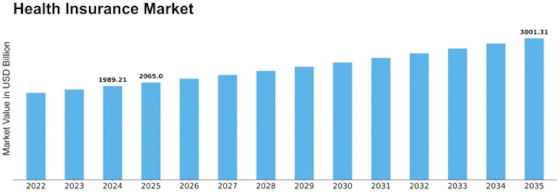

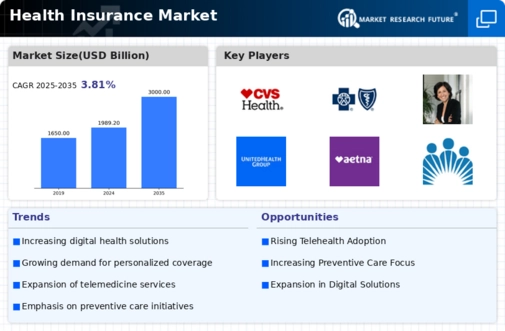
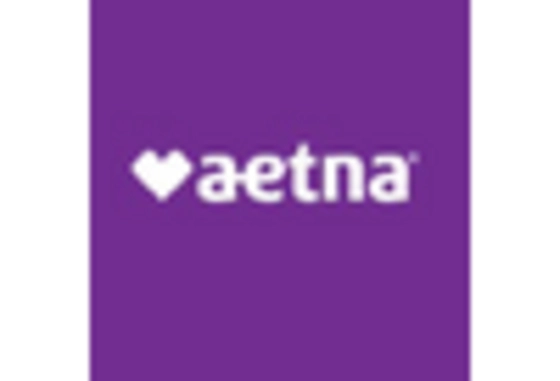

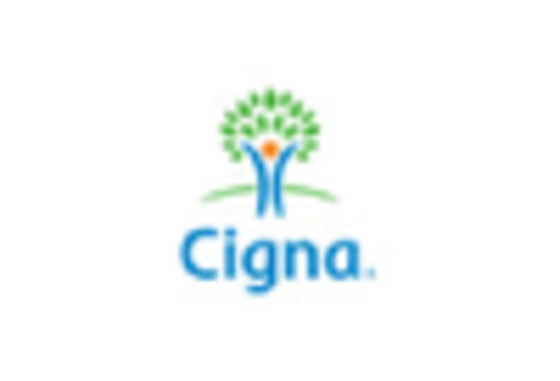
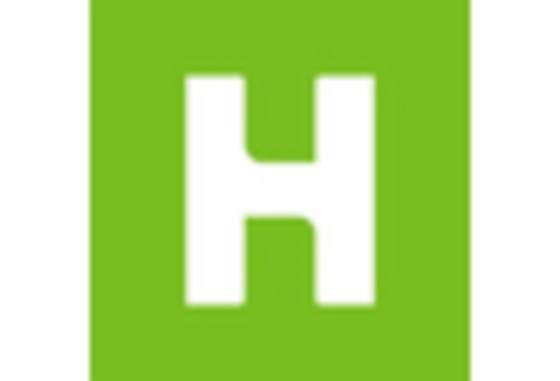
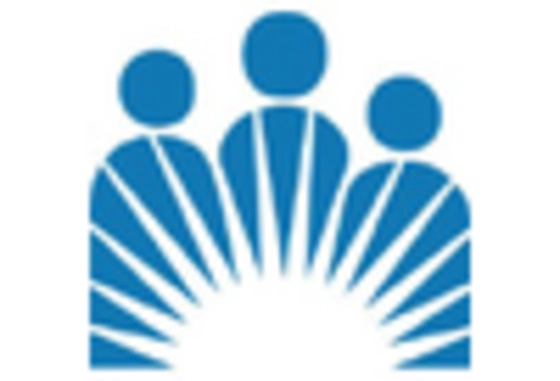
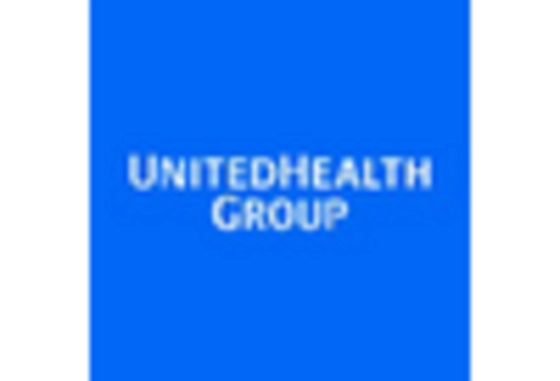

Leave a Comment